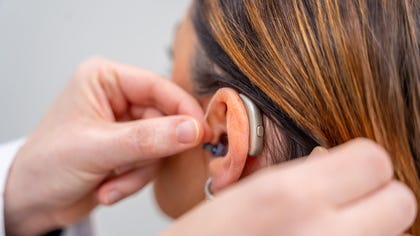FCC Mandates Hearing Aid Compatibility for All Mobile Phones
In a significant stride towards greater accessibility, the Federal Communications Commission (FCC) has announced new regulations mandating that all mobile phones sold in the United States must be compatible with hearing aids. This groundbreaking decision will revolutionize the way millions of Americans with hearing loss interact with their devices, breaking down barriers and empowering them to fully participate in the digital age.
Hearing loss affects a substantial portion of the population, particularly as people age. In the United States, an estimated 48 million individuals experience some degree of hearing loss. For these individuals, the ability to effectively communicate and access information through mobile devices is crucial.
Historically, many mobile phones have been incompatible with hearing aids, leading to frustration and limitations for users with hearing loss. Traditional hearing aids rely on sound transmission through the phone’s earpiece, which can be distorted or muffled by certain phone models. This incompatibility has hindered communication and limited the range of phone options available to individuals with hearing loss.
FCC’s Role in Improving Accessibility
The FCC has a long history of advocating for accessibility in telecommunications. The agency has implemented various rules and regulations to ensure that people with disabilities can access telecommunications services. The new hearing aid compatibility rule is a continuation of this commitment.
By mandating hearing aid compatibility, the FCC is addressing a critical need and ensuring that individuals with hearing loss can fully benefit from the technological advancements of the 21st century. This decision is in line with the broader push for digital accessibility, which aims to make technology inclusive for everyone.
Key Requirements of the New Rules
The FCC’s new rules will require all mobile phones sold in the United States to meet specific standards for hearing aid compatibility. These standards include:
Volume Control: Phones must have sufficient volume control to accommodate a wide range of hearing needs. This ensures that users can adjust the volume to a level that is comfortable and audible for them.
Bluetooth Compatibility: Phones must support Bluetooth technology, enabling seamless connectivity with hearing aids that use Bluetooth. This allows for clear and high-quality audio transmission, improving the overall listening experience.
Telecoil Compatibility: Many hearing aids use telecoils to directly receive audio signals from devices equipped with telecoil technology. The FCC’s rules require phones to support telecoil compatibility, ensuring that users can connect their hearing aids directly to the phone for optimal sound quality.
Clear Labeling: Manufacturers must clearly label their phones as hearing aid compatible, making it easier for consumers to choose devices that meet their needs.
The FCC’s new rules are expected to have a significant impact on the mobile industry. Manufacturers will need to invest in research and development to ensure that their devices meet the new standards. This could involve redesigning hardware, optimizing software, and conducting extensive testing to verify compatibility.
While these changes may increase costs for manufacturers, they are ultimately beneficial for consumers. By investing in accessibility features, manufacturers can attract a wider range of customers and build brand loyalty among individuals with hearing loss.
The FCC’s decision to mandate hearing aid compatibility is a major step forward, but it is just one piece of the puzzle. As technology continues to evolve, it is essential to ensure that it remains accessible to all. This includes developing innovative solutions for other disabilities, such as visual impairments and cognitive disabilities.
The future of accessibility lies in a combination of technological advancements, regulatory policies, and industry best practices. By working together, manufacturers, regulators, and consumer advocates can create a more inclusive digital world for everyone.
The FCC’s new rules on hearing aid compatibility represent a significant milestone in the ongoing effort to make technology more accessible. By mandating specific standards and requiring clear labeling, the FCC is empowering individuals with hearing loss to fully participate in the digital age. As technology continues to advance, it is crucial to ensure that everyone has the opportunity to benefit from its many advantages.


Comments are closed.